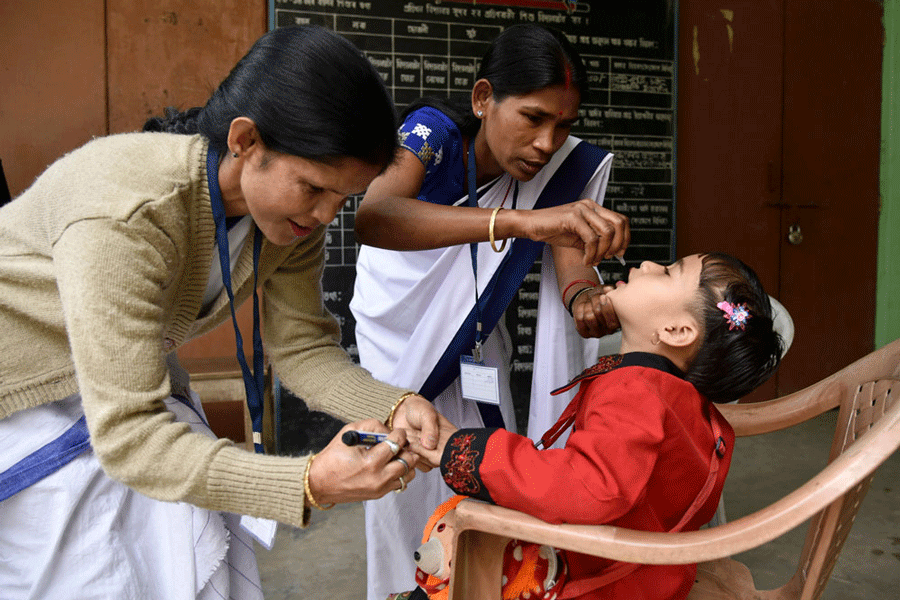Swasthya Bhavan, the state health headquarters, on Friday issued a memorandum with a roadmap on monitoring the health of children across Bengal, including schoolchildren and dropouts.
The state health and family welfare department has set up a state-level steering committee as well as related committees in every district and block across Bengal to properly monitor diseases, deficiencies and developmental delays among school-going children and those who have dropped out.
The state-level steering committee will be chaired by chief secretary H.K. Dwivedi. The district committees will be headed by district magistrates. Block development officers will head the block-level committees.
“The government is extremely concerned about the health of children, particularly in the rural areas where they have many health-related deficiencies. The government wants to zero in on the children suffering from diseases and deficiencies by organising health check-up camps at schools and other strategic locations, and supporting them with proper medicines and supplements,” said a senior health official in Calcutta.
“As it is a major drive across the state involving at least three government departments, committees needed to be formed for proper monitoring,” he added.
A source said that the state government had taken such steps on children’s health earlier as well but many flaws were discerned in their implementation on the ground. This is why the state government is not willing to take any chances this time.
“The main concern of this latest drive by the Bengal government is children suffering from anaemia. Several health surveys suggest that at least two out of 10 children in rural Bengal are deficient in iron and folic acids. The government will ensure that iron and folic acid supplements reach those children. Those who are suffering from any other disease or deficiency will also be taken care of,” said a senior health official.
However, a section of health officials posted in the districts said that these district-level committees had not involved several crucial health officials in the know of things, such as the deputy chief medical officer of health or those who have experience in looking into specific aspects of public health.
“In the district-level committee, only the chief medical officer of the district concerned is included as a health official. But there are separate officials looking after the family welfare and public health in the districts who have been excluded from this initiative,” said a chief medical officer (health) of a south Bengal district who did not want to be named.
Contacted, health secretary Narayan Swarup Nigam said this was not an issue. He clarified that the head of each committee could include any official from any department at any point in time as required for the efficient implementation of the initiative.
Nigam also stressed on the importance of monitoring child health on the ground in a streamlined manner.
“These committees have been formed for better coordination. Anyone can be added to any committee according to requirement,” Nigam said.

Panchaban Art Resort, a private property in Santiniketan that has been built with a sprawling cultural space on its campus, has been organising at least two plays a week since February. The resort has a cultural platform — Khapchhara (named after a collection of poems for children by Rabindranath Tagore) — where any Bengali theatre troupe from any part of the state or neighbouring Bangladesh can perform. The owner of the resort, Tapos Mallick, who loves to paint portraits and write poems, started the initiative on the eve of Christmas. So far, 61 plays have been staged. Mallick said he took up the initiative as he felt there were no regular cultural events in Santiniketan although the place is famous for Tagore, who gave priority to culture and performing arts at Visva-Bharati. The organisers said there were hundreds of small theatre groups that had none to promote them. This initiative has given a platform to them. Apart from plays, the art resort has been organising several discussions on issues with the participation of cultural activists, academics and journalists from Bengal and Bangladesh. Report by Snehamoy Chakraborty, picture by Amarnath Dutta











